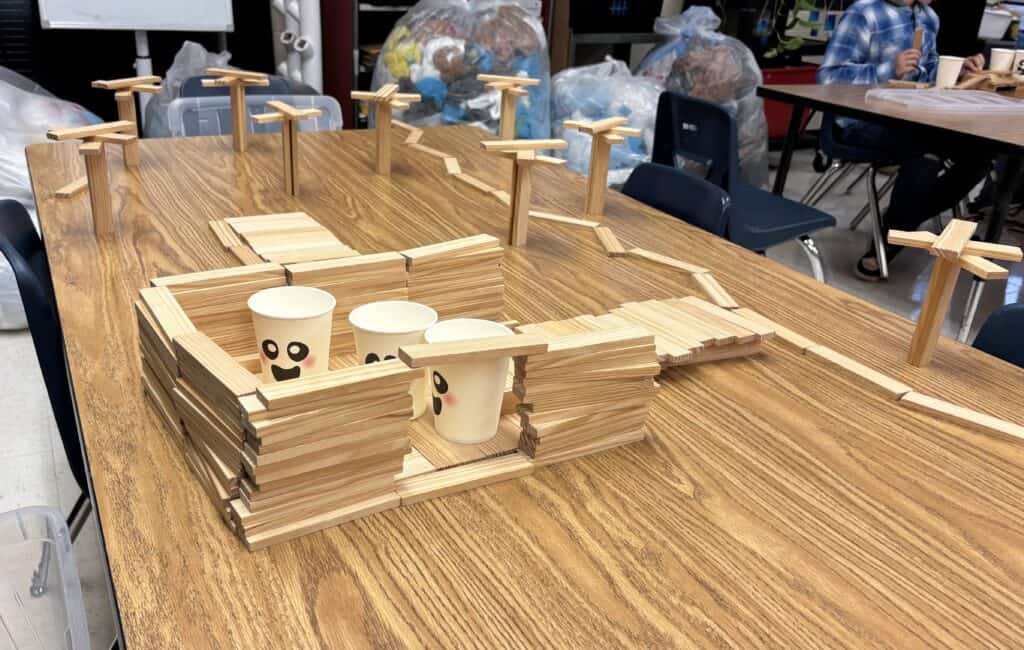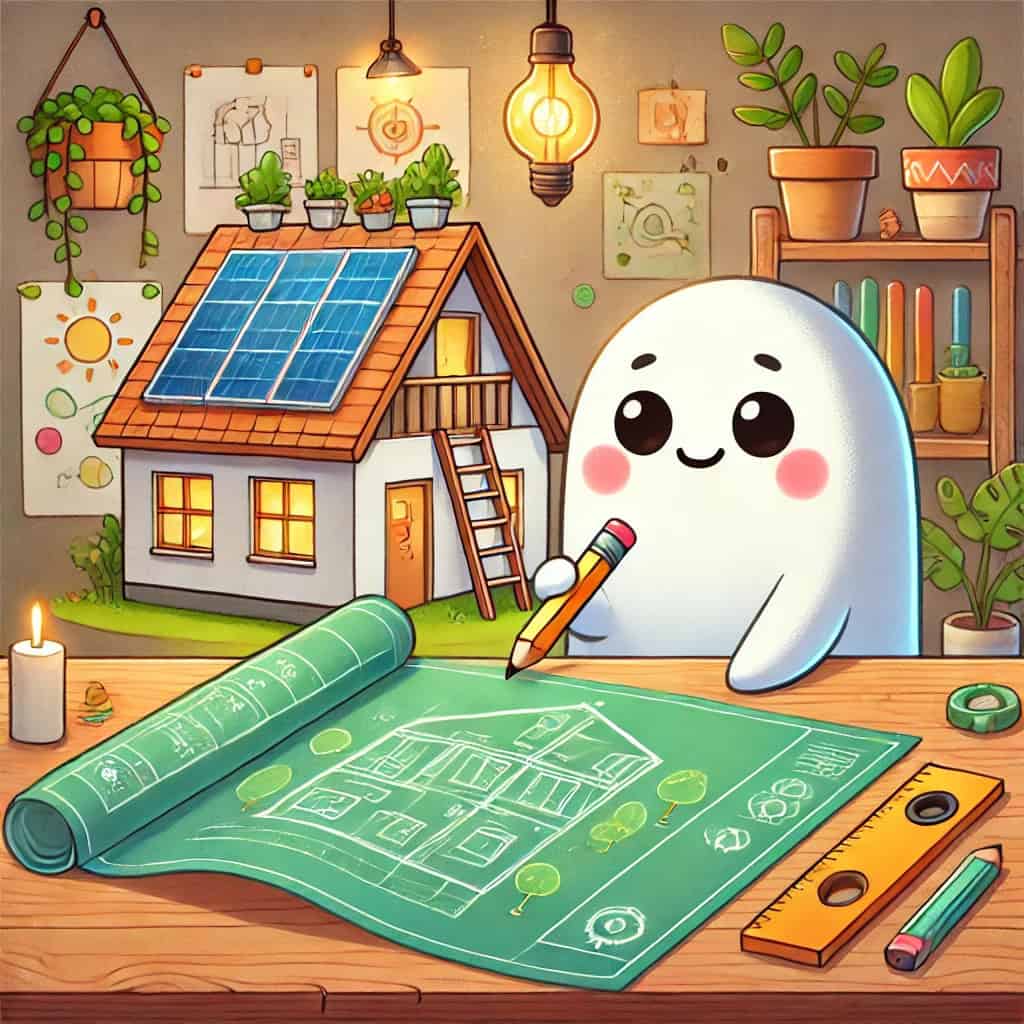This week, I gave my students a very open-ended challenge through the Engineering Design Process, and they completely blew me away.
We started by reading How to Build a Haunted House by Frank Tupta. The story is full of silly fun, but it also opened the door to a deeper question: what does it mean to build a home that meets the needs of its owner? From there, we started talking about how homes meet our needs and what it might look like to design a home that also takes care of the planet.
That led us to our EDP challenge for the week:
Ask: Can you create a sustainable ghost house out of Kapla planks?
Requirements:
- The house must hold three ghosts (and you can’t stack them inside each other).
- It must include at least one sustainable design idea.
Imagine and Plan: With a partner, sketch and plan your design before you build.
Create: Build your ghost house, make sure all three ghosts fit, and be ready to describe your sustainable design element.
Before they started planning, I introduced the idea of sustainable architecture. We looked at how architects design homes that use natural light, renewable energy, and local materials. I gave them a few examples, but then it was their turn to take those ideas and run with them. And they did!!
Student Creativity Shines
Once the building started, the room filled with the best kind of energy…students talking through ideas, testing designs, and rethinking when things didn’t work out the first time.
One team built a home tucked into an old-growth forest. They decided not to cut down the trees, explaining that keeping the native forest would help shade the house and protect animal habitats. Their design included water from a nearby stream to irrigate a small garden, a compost bin for food waste, and solar panels on the ground since they didn’t build a roof.
They even added a system to store the energy from their solar panels and described how water could flow through the house to cool it during the summer. The level of thought they put into it was incredible.
These ideas weren’t just imaginative…they reflected real sustainability concepts. The students were thinking like engineers, problem-solvers, and environmental stewards all at once.

Why It Worked
What made this lesson so powerful was how open it was. The challenge had structure, but there wasn’t a single “right” answer. Students had to collaborate, think critically, and make creative choices. The Engineering Design Process gave them a way to organize their thinking, but the sustainability focus gave their work meaning.
When we step back and let students lead, amazing things happen. They find connections we might not have planned, and they start to see themselves as capable of designing solutions that make a difference.
Bringing It Into Your Classroom
If you want to try something similar, start with a simple question and a relatable theme. You don’t need fancy materials, just an open-ended prompt and a chance for students to think creatively about how to care for the world around them.
Challenges like this remind students (and us) that learning can be imaginative, hands-on, and full of purpose. Because even ghosts deserve a sustainable home.
Interested in Learning More About Sustainable STEM?
Take a look at some of the other blogs based on Sustainability in the Classroom.
